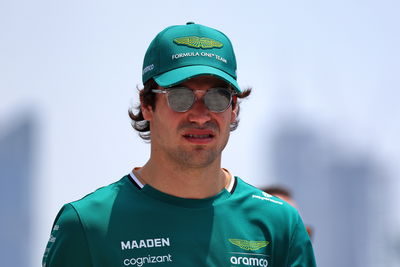Why Williams is shifting its F1 strategy for closer ties with Mercedes

Williams’ expansion of its technical tie-up with Mercedes represents a significant shift in its philosophy of how it goes racing in Formula 1, but it also reflects changing times in the sport.
Technical collaborations between teams are nothing new in F1, with Racing Point, Haas, and AlphaTauri all moving to strengthen their existing relationships with Mercedes, Ferrari, and Red Bull respectively in recent years to share certain non-listed parts.
This apparent trend of increasing alignment between independent constructors and manufacturers has not come without controversy - none more so than the ‘copying’ row that broke out over Racing Point’s approach to drawing inspiration from Mercedes' 2019 title-winning W10 last year.
Williams has always stressed pride on its status as an independent constructor and has developed all parts of their racing cars in-house, but the move to draw closer with Mercedes means that from 2022 the Grove-based outfit will be sourcing a gearbox and other transferable parts from the outside, in addition to the power units it has received from the German manufacturer since the start of the V6 turbo hybrid era in 2014.
Why the change in policy now?
Williams is currently in the midst of trying to recover from its recent slump and performance decline, having found itself anchored to the bottom of the constructors’ championship for the past two years.
Clear improvements were visible in 2020 but the team was still largely stuck in the ‘Class C’ battle at the back of the grid, though it did move closer to direct rivals Haas and Alfa Romeo as the season wore on. Significant progress up the field will be a time-consuming process, though Williams is hoping to capitalise on the incoming regulation overhaul for 2022 and haul itself further up the order.
Williams was at its most competitive at the start of the current era of regulations when it benefitted from Mercedes’ superior power unit to secure back-to-back P3 finishes in the constructors’ championship in 2014 and 2015, before gradually slipping down the order.
Sourcing permitted components from the current best team in F1 is the quickest, and most efficient way, of achieving its short-to-mid-term goals. It is most cost-effective too - an important consideration now that teams must adhere to the new $145million budget cap that has been introduced for this year. Like many teams, Williams had been struggling financially even before the coronavirus pandemic struck.
A noticeable attitude shift appears to have come following the team’s sale to Dorilton Capital by the founding Williams family who departed following September’s Italian Grand Prix. Times are changing in F1, and Williams’ new stance is a direct response to that.
"Williams is an independent team, but Formula 1 is always evolving, and as a team we must be agile to react to the current climate in order to put the team in the best position to be competitive on track,” Williams team principal Simon Roberts explained.
"This long-term agreement with Mercedes is a positive step and forms part of our strategic objectives for the future whilst we will still retain our design and manufacturing capabilities in-house.”
It is a move that has been discussed for a while, according to Mercedes F1 boss Toto Wolff, who believes the new arrangement is a positive step for both teams.
"We are pleased to expand our technical cooperation with Williams through this new agreement,” he said.
"For Williams, it makes sense to acquire the integrated powertrain after running our power units since 2014 and for our team, it makes sense in terms of economies of scale to supply another team under the new rules.
"This is a project we have been discussing with Williams for some time and I am glad we have been able to bring this extension to fruition.”
Will it have any bearing on Russell’s future?
As this is a technical-related collaboration, on the outside it would seem it changes very little. There is certainly no doubt that this deal favours Williams, and it could be seen as acting as something of a sweetener from Mercedes as it weighs up Russell’s future.
Discussions about the ‘project’ are understood to have ramped up in Bahrain when Williams agreed to loan Russell to Mercedes, freeing him to race for the reigning world champions in place of Lewis Hamilton, who had been ruled out of the weekend following a positive test for coronavirus.
Russell ultimately missed out on a Mercedes promotion for 2021 after the team decided to renew Valtteri Bottas’ contract for a further season, though the Briton is entering the final year of his deal to drive for Williams.
While negotiations with star driver Hamilton over a contract extension are ongoing, Daimler is eyeing Russell for the long-term following his consistent starring performances for Williams over the past two years and an impressive debut for Mercedes at the Sakhir GP.
Russell already seemed destined to drive for Mercedes one day, but this strengthened partnership between the two teams can only be a positive for him.











